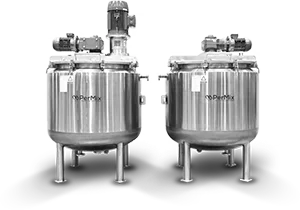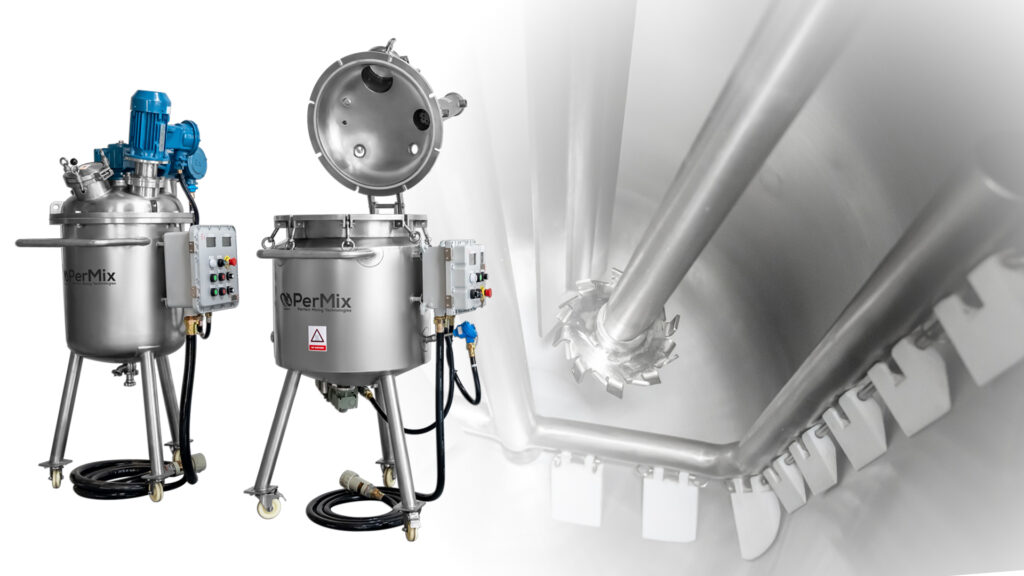How Beauty Cremes Are Made, The Ingredients That Go In Them, & The Mixers That Are Used In Manufacturing
The formulation of beauty creams involves a combination of various ingredients to achieve specific skincare goals. The exact composition can vary based on the intended purpose of the cream, such as moisturizing, anti-aging, sun protection, or treating specific skin concerns. Here’s a general overview of the ingredients and the manufacturing process:
Common Ingredients in Beauty Creams:
- Water (Aqua): The base of most creams is water, providing a hydrating foundation.
- Emollients: These are ingredients that help soften and smooth the skin. Common emollients include oils (jojoba oil, almond oil), fatty acids, and esters.
- Humectants: To attract and retain moisture, humectants like glycerin and hyaluronic acid are often included.
- Emulsifiers: These ingredients help combine oil and water components, creating a stable and uniform texture. Examples include cetearyl alcohol and polysorbate.
- Thickeners: These add viscosity to the cream, enhancing its texture. Thickening agents may include waxes, gums, or polymers.
- Active Ingredients: Depending on the cream’s purpose, active ingredients like retinol, peptides, antioxidants (vitamin C, E), or hyaluronic acid may be added for specific skincare benefits.
- Preservatives: To prevent the growth of bacteria and fungi, preservatives such as parabens or phenoxyethanol are often included.
- Fragrances: Fragrances are added for a pleasant scent. Some formulations may be fragrance-free for sensitive skin.
Manufacturing Process:
- Weighing and Measuring: Precise amounts of each ingredient are measured based on the formulation.
- Heating and Melting: Solid ingredients like waxes and oils are melted together, often in a water bath. This creates a homogeneous liquid phase.
- Emulsification: The oil and water phases are combined using emulsifiers to create a stable emulsion.
- Cooling and Mixing: The emulsion is cooled while being mixed to ensure a consistent texture.
- Adding Active Ingredients: Active ingredients, which are often heat-sensitive, may be added during the cooling phase to preserve their efficacy.
- pH Adjustment: The pH of the cream is adjusted to a level suitable for the skin, typically slightly acidic.
- Preservation: Preservatives are added to prevent microbial contamination.
- Packaging: The finished cream is then packaged in suitable containers, which may include tubes, jars, or pumps.
It’s important to note that formulations can vary greatly between different products and brands. Additionally, the manufacturing process may involve additional steps or variations based on the specific type of beauty cream being produced. Regulatory standards also play a role in ensuring the safety and quality of skincare products.
Types Of Mixers Used
In the manufacturing of beauty creams, various types of mixers are used to ensure thorough blending of ingredients and the creation of a homogeneous product. The choice of mixer depends on factors such as the viscosity of the formulation, the type of ingredients used, and the desired texture of the final product. Here are some common types of mixers used in the cosmetic industry:
- Propeller Mixers:
- Description: These mixers have a set of rotating blades (propellers) that create a flow within the mixture, promoting blending.
- Use: Suitable for low to medium viscosity formulations.
- Homogenizers:
- Description: Homogenizers use high-pressure forces to break down particles and create a uniform mixture.
- Use: Effective for emulsifying and achieving a fine texture.
- Agitators:
- Description: Agitators use a rotating impeller or paddle to stir the ingredients and maintain a consistent mixture.
- Use: Ideal for maintaining the uniformity of the formulation.
- Planetary Mixers:
- Description: These mixers have a set of blades that rotate on their own axis while orbiting the mixing vessel.
- Use: Suitable for mixing and blending a wide range of viscosities.
- High-Speed Mixers:
- Description: High-speed mixers use rapid agitation to quickly blend ingredients.
- Use: Effective for mixing powders or dispersing solid particles in liquids.
- Vacuum Emulsifying Mixers:
- Description: These mixers combine mixing with vacuum technology, helping to remove air bubbles and improve product stability.
- Use: Commonly used in the production of high-quality emulsions.
- Peristaltic Pumps:
- Description: Peristaltic pumps use rotating rollers to compress a flexible tube, pushing the product through the tube.
- Use: Often used for transferring and dosing ingredients accurately.
- Homogenizer Mixers:
- Description: Homogenizer mixers are high-shear mixers that use a rotor-stator arrangement to create intense shear forces for efficient mixing.
- Use: Suitable for emulsification and dispersion of ingredients.
- Static Mixers:
- Description: These mixers have no moving parts and rely on the design of stationary elements to promote mixing.
- Use: Effective for continuous mixing of low to medium viscosity products.
The choice of mixer depends on the specific requirements of the formulation and the production scale. Larger manufacturing facilities may use automated and high-capacity mixers, while smaller-scale operations might opt for more manual or benchtop mixers. Additionally, some formulations may require a combination of different mixing technologies to achieve the desired results.


